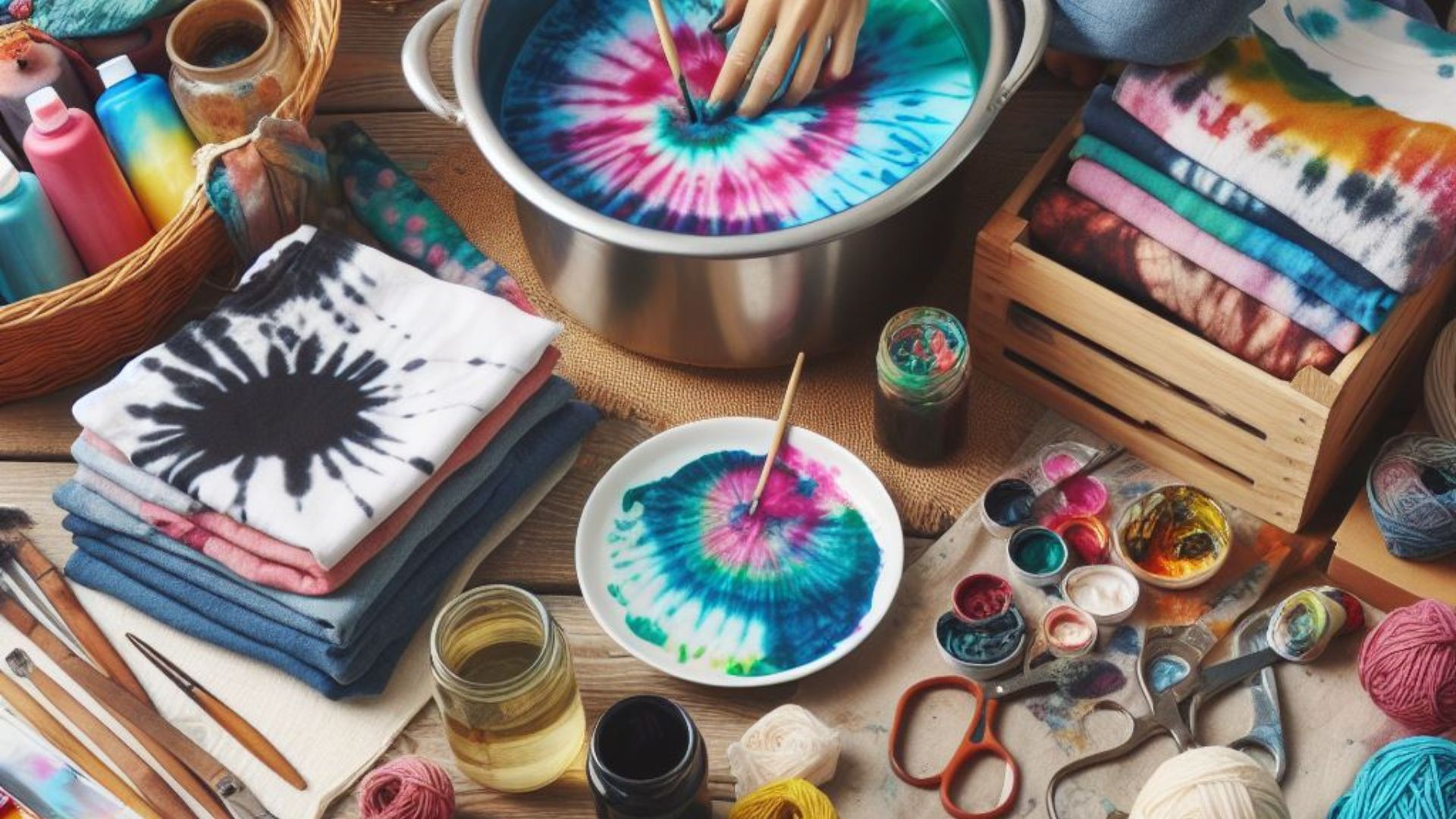Color bleeding can be a major headache, especially when it comes to dyeing fabrics. It’s that frustrating moment when the vibrant red you intended for your favorite shirt starts to mingle with the whites in the laundry. One factor that contributes to this problem is the varying setting times of different dyes.
What Causes Color Bleeding?
When we dye fabrics, the process involves the application of color through various dyes. Each dye may have its own specific setting time, which refers to the duration required for the dye to bond effectively with the fabric fibers. This setting process is crucial to lock the color in place, preventing bleeding when the fabric gets wet or washed.
Risks of Varied Dye Setting Times
Imagine using two different dyes on a single fabric, each with its own setting time. If one dye sets quickly while the other takes longer, there’s a risk of uneven color absorption. Here are the potential risks:
Uneven Color Distribution
Dyes with different setting times may not penetrate the fabric uniformly. This can lead to patches or streaks of color, creating an undesirable appearance on the fabric.
Increased Risk of Bleeding
When dyes haven’t properly bonded due to varied setting times, there’s a higher chance of color bleeding. This bleeding occurs when the fabric gets wet, whether through washing, rain, or even perspiration.

Difficulty in Control
Managing varied setting times can be challenging. It requires precise timing and control during the dyeing process, which might not always be achievable, especially for beginners.
Minimizing Risks
To minimize color bleeding from varied dye setting times, consider these steps:
- Pre-Testing: Always test the dyes on a small fabric sample before dyeing the entire piece. This helps identify any potential issues with color bleeding.
- Matching Setting Times: If using multiple dyes, try to select ones with similar setting times to ensure better uniformity in color absorption.
- Follow Manufacturer Guidelines: Adhere to the recommended setting times provided by the dye manufacturer. This helps achieve the best results and minimizes the risk of bleeding.
So,…
Color bleeding due to varied dye setting times can be a challenge, but with careful consideration and adherence to recommended guidelines, it’s possible to minimize the risks. Always test, match, and follow instructions to ensure your fabrics retain their vibrant colors without bleeding or uneven patches.
a little attention to detail in the dyeing process can go a long way in preserving the beauty of your fabrics!
External Resources:
- Textile Dyes: Types, Chemistry, and Applications – Textile School
- Dyeing Techniques and Tips – Dharma Trading Co.
- Understanding Fabric Dyes – FabricLink
These resources offer further insights into fabric dyes, techniques, and understanding the complexities involved in achieving the perfect colors without the risk of bleeding.
Impact of Fabric Types
Different fabrics react diversely to various dyes and their setting times. Natural fibers like cotton or silk may absorb dyes differently compared to synthetic materials such as polyester. This variance can lead to uneven color absorption and, subsequently, bleeding if not managed carefully.
Tips for Different Fabrics
- Pre-Treat Fabric: Treat the fabric with a fixative before dyeing to enhance dye absorption and reduce bleeding.
- Select Compatible Dyes: Choose dyes specifically formulated for the fabric type to ensure better adherence and minimize bleeding risks.
Expert Tips for Dyeing Success
1. Patience is Key
Allow ample time for the dyes to set properly. Rushing the setting process increases the likelihood of color bleeding.
2. Thorough Rinsing
After dyeing, rinse the fabric thoroughly to remove any excess dye. This step helps in reducing the chances of bleeding during subsequent washes.
3. Consider Professional Help
For intricate or valuable fabrics, seeking assistance from professional dyers can ensure a more controlled and precise dyeing process.
Troubleshooting Color Bleeding
Despite precautions, color bleeding can still occur. In such cases:
- Separate Colors: Wash bleeding fabrics separately to prevent color transfer to other items.
- Use Color-Catcher Sheets: These sheets absorb loose dyes in the wash, preventing them from staining other fabrics.
Conclusion
Varied dye setting times pose a risk of color bleeding, but with careful consideration of fabric types, adherence to instructions, and implementing preventive measures, you can minimize these risks significantly.
Remember, the key lies in patience, attention to detail, and selecting dyes and fabrics that complement each other. By following these guidelines, you can achieve beautifully dyed fabrics without the frustration of color bleeding.
Color your world confidently, knowing that you’ve mastered the art of dyeing without the fear of bleeding colors
Comparison tabular
| Aspect | Varied Dye Setting Times | Uniform Dye Setting Times |
|---|---|---|
| Color Distribution | May result in uneven patches/streaks | More uniform color absorption |
| Risk of Bleeding | Higher risk due to incomplete bonding | Lower risk with proper bonding |
| Control during Dyeing | Challenging to manage timing | Easier management with synced times |
| Fabric Impact | Varies across different fabric types | Consistent impact on various fabrics |
| Preventive Measures | Pre-testing, matching, careful timing | Pre-testing, adherence to guidelines |
| Post-Dyeing Solutions | Separate washing, color-catcher sheets | Separate washing, color-catcher sheets |
This table showcases the key differences between varied dye setting times and uniform dye setting times, emphasizing how uniformity in setting times can lead to more consistent and reliable dyeing results with reduced risks of color bleeding.
Wrapping up
In the colorful world of fabric dyeing, mastering the nuances of dye setting times is key to preserving vibrant colors without the headache of bleeding. Whether you’re a seasoned dyer or just starting on this creative journey, understanding the risks associated with varied dye setting times is crucial.
By embracing pre-testing, following manufacturer guidelines, and selecting dyes that sync in their setting times, you pave the way for beautifully dyed fabrics that retain their brilliance wash after wash.
Remember, fabric types play a pivotal role in how dyes interact, so always consider the material you’re dyeing and tailor your approach accordingly. And in those instances where color bleeding sneaks in unexpectedly, fret not! Simple solutions like separate washes and color-catcher sheets can save the day.
With these insights, may your dyeing adventures be filled with vibrant colors, uniform hues, and fabrics that speak volumes without the fear of color bleeding.
Here’s to a world where every dye sets perfectly, every fabric shines brightly, and your creativity knows no bounds!
Happy dyeing! 🌈✨

For over a decade, I’ve been Mike, an artist, crafter, and designer deeply immersed in the Croc world. I thrive on crafting unique, size-inclusive patterns, fostering creativity, and sharing them on ktforum.com. My designs aim to ignite your creative spark and delight you, ensuring clarity and ease of use through rigorous testing. Join me in expressing your creative flair and showcasing your craft with joy.
Related Posts
- Adjusting Setting Times Based on Dye Expiration Dates: A Guide
Dyeing fabrics or materials can be a creative and rewarding process, but it's essential to…
- Understanding Tie-Dye: Is a Short Setting Time a Risk for Bleeding
Tie-dye, the vibrant and artistic process of adding color to fabric, is a beloved craft…
- Accelerating the Tie-Dye Setting Process: Hairdryer or Fan?
Tie-dyeing is an art form that’s not just about colors; it’s about patience and precision.…
- Preventing Color Bleeding in Crochet: Tips and Techniques
Crocheting is a delightful craft, but encountering bleeding colors can be frustrating. Imagine spending hours…

